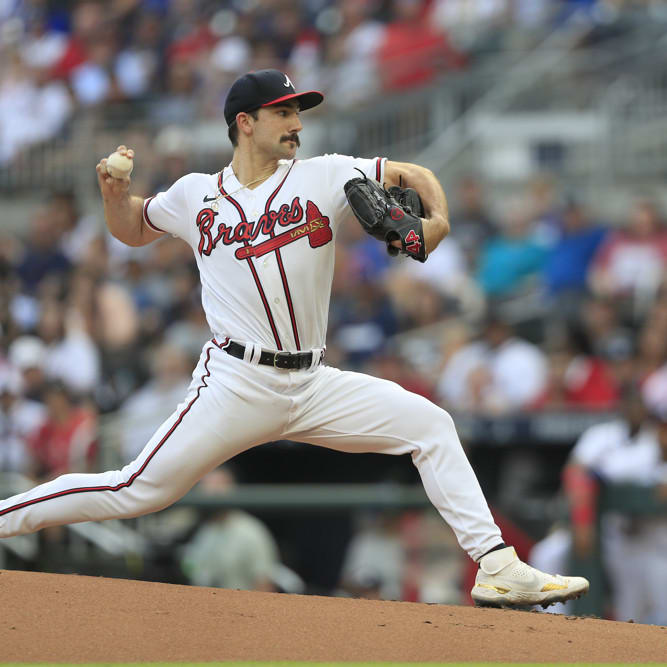This article is part of our MLB Barometer series.
With two months of the season in the books, it's time to revisit an exercise featured in this column in the final Barometer in April. We'll look at the players who have most exceeded or most fallen short of their draft-day expectations through the end of May. As I noted in the end-of-April article, this represents a more results-oriented look at the season than normal, but I'll dive into a pair of players with each list and examine more closely how sustainable their performances have been.
We'll look at the biggest risers and fallers among top-100 picks and top-450 picks (the number of picks made in a standard NFBC draft). We'll also look at the top risers among players not picked within the top 450. (The reverse isn't particularly interesting, as there's not much to be gained from learning that an undraftable player has indeed been undraftable.)
These lists were created by comparing each player's NFBC ADP with his ranking on the Earned Auction Values list. The latter page was set to show values for a 15-team league with standard NFBC settings (14 hitters and nine pitchers), with 70 percent of the budget spent on hitters. For the lists of fallers, I ignored players who have been out for more than half of the season due to injury, as it's not particularly interesting to learn that an injured player has been a bust. (If you're curious, Giancarlo Stanton owners, he's played like a 57th-round pick.)
RISERS
Top 100 picks
With two months of the season in the books, it's time to revisit an exercise featured in this column in the final Barometer in April. We'll look at the players who have most exceeded or most fallen short of their draft-day expectations through the end of May. As I noted in the end-of-April article, this represents a more results-oriented look at the season than normal, but I'll dive into a pair of players with each list and examine more closely how sustainable their performances have been.
We'll look at the biggest risers and fallers among top-100 picks and top-450 picks (the number of picks made in a standard NFBC draft). We'll also look at the top risers among players not picked within the top 450. (The reverse isn't particularly interesting, as there's not much to be gained from learning that an undraftable player has indeed been undraftable.)
These lists were created by comparing each player's NFBC ADP with his ranking on the Earned Auction Values list. The latter page was set to show values for a 15-team league with standard NFBC settings (14 hitters and nine pitchers), with 70 percent of the budget spent on hitters. For the lists of fallers, I ignored players who have been out for more than half of the season due to injury, as it's not particularly interesting to learn that an injured player has been a bust. (If you're curious, Giancarlo Stanton owners, he's played like a 57th-round pick.)
RISERS
Top 100 picks
| PLAYER | POS | TEAM | ADP | EARNED $ RANK | DIFF |
|---|---|---|---|---|---|
| Joey Gallo | 1B/OF | TEX | 98.5 | 13 | 85.5 |
| Eddie Rosario | OF | MIN | 82.2 | 10 | 72.2 |
| Marcell Ozuna | OF | STL | 80.5 | 11 | 69.5 |
| Jose Abreu | 1B | CHW | 85.3 | 22 | 63.3 |
| George Springer | OF | HOU | 61.0 | 8 | 53.0 |
| Zack Greinke | SP | ARI | 65.7 | 17 | 48.7 |
| Cody Bellinger | 1B/OF | LAD | 43.2 | 1 | 42.2 |
| Mitch Haniger | OF | SEA | 91.1 | 55 | 36.0 |
| Roberto Osuna | RP | HOU | 86.2 | 53 | 33.2 |
| Adalberto Mondesi | SS | KC | 40.1 | 9 | 31.9 |
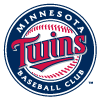 Eddie Rosario, OF, Twins: Rosario's sixth-round draft price made sense for a player who was coming off two straight seasons with a batting average around .290 and about 25 home runs. This season, however, he's played like a first rounder thanks to a big uptick in power. His 17 homers tie him for first in the AL and put him on pace for 47.5, blowing past his career high of 27. The surging Twins offense has helped him rack up 49 RBI, second in the AL. Rosario's Statcast numbers show all the signs you're hoping to see to support a power breakout: he's seen jumps in his exit velocity (from 87.3 mph to 90.4 mph), barrel rate (8.3 percent to 11.7 percent) and hard-hit rate, all of which are easily career highs. All signs point to this being a legitimate breakout in Rosario's age-27 season.
Eddie Rosario, OF, Twins: Rosario's sixth-round draft price made sense for a player who was coming off two straight seasons with a batting average around .290 and about 25 home runs. This season, however, he's played like a first rounder thanks to a big uptick in power. His 17 homers tie him for first in the AL and put him on pace for 47.5, blowing past his career high of 27. The surging Twins offense has helped him rack up 49 RBI, second in the AL. Rosario's Statcast numbers show all the signs you're hoping to see to support a power breakout: he's seen jumps in his exit velocity (from 87.3 mph to 90.4 mph), barrel rate (8.3 percent to 11.7 percent) and hard-hit rate, all of which are easily career highs. All signs point to this being a legitimate breakout in Rosario's age-27 season.
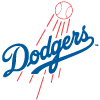 Cody Bellinger, 1B/OF, Dodgers: We all generally knew Bellinger was quite a good hitter, as his ADP in the late third round indicates, but anyone who claims to have known that he'd be the best hitter in baseball this season is probably lying. His 20 homers, second in the league and five short of last year's total, are certainly impressive, but he'd shown similar power before, hitting 39 bombs in his 132-game debut back in 2017. Keeping that level of power while also improving his batting average from .260 to .376 is truly remarkable. One might be tempted to look at Bellinger's .371 BABIP and say that he's clearly overachieving in that category, but Statcast would disagree, as his .389 expected batting average suggests that, if anything, he's slightly underachieved. He's simply hit the ball far harder than before (increasing his hard-hit rate from 38.6 percent to 52.6 percent) while hitting it far more often (dropping his strikeout rate from 23.9 percent to 13.7 percent). If Bellinger can keep up some semblance of this level of performance over the rest of the season, he'll make the conversation about the number one pick in next year's fantasy drafts very interesting.
Cody Bellinger, 1B/OF, Dodgers: We all generally knew Bellinger was quite a good hitter, as his ADP in the late third round indicates, but anyone who claims to have known that he'd be the best hitter in baseball this season is probably lying. His 20 homers, second in the league and five short of last year's total, are certainly impressive, but he'd shown similar power before, hitting 39 bombs in his 132-game debut back in 2017. Keeping that level of power while also improving his batting average from .260 to .376 is truly remarkable. One might be tempted to look at Bellinger's .371 BABIP and say that he's clearly overachieving in that category, but Statcast would disagree, as his .389 expected batting average suggests that, if anything, he's slightly underachieved. He's simply hit the ball far harder than before (increasing his hard-hit rate from 38.6 percent to 52.6 percent) while hitting it far more often (dropping his strikeout rate from 23.9 percent to 13.7 percent). If Bellinger can keep up some semblance of this level of performance over the rest of the season, he'll make the conversation about the number one pick in next year's fantasy drafts very interesting.
Picks 101-450
| PLAYER | POS | TEAM | ADP | EARNED $ RANK | DIFF |
|---|---|---|---|---|---|
| Domingo German | SP | NYY | 435.7 | 56 | 379.9 |
| Caleb Smith | SP | MIA | 444.1 | 105 | 339.1 |
| Joc Pederson | OF | LAD | 366.5 | 39 | 327.5 |
| Kole Calhoun | OF | LAA | 426.5 | 103 | 323.5 |
| Avisail Garcia | OF | TB | 389.0 | 79 | 310.0 |
| Adam Jones | OF | ARI | 359.3 | 80 | 279.3 |
| Matthew Boyd | SP | DET | 321.2 | 44 | 277.2 |
| Mike Minor | SP | TEX | 372.4 | 97 | 275.4 |
| Chris Paddack | SP | SDP | 320.9 | 63 | 257.9 |
| Josh Bell | 1B | PIT | 256.4 | 4 | 252.4 |
 Matthew Boyd, SP, Tigers: Boyd featured in the second Barometer of the week but is worth another look, as he's been able to sustain a similar level of performance, pitching like a third-round pick after being a 19th-rounder during draft season. His 3.01 ERA, well below his previous best of 4.39, looks to be well-earned according to the estimators (2.76 FIP, 3.34 xFIP, 3.19 SIERA). He's increased his strikeout rate from 22.4 percent to 30.8 percent while slashing his walk rate from 7.2 percent to 4.8 percent. That 26.0 percent strikeout minus walk rate is good for sixth among qualified starters, one spot above Justin Verlander. The lefty's improvement seems to stem mostly from throwing his two best pitches (a fastball and a slider) more often, dropping the usage of his third pitcher (a curveball) from 12.3 percent to 5.5 percent. He could fall quite far and still be a significant bargain at his draft-day price.
Matthew Boyd, SP, Tigers: Boyd featured in the second Barometer of the week but is worth another look, as he's been able to sustain a similar level of performance, pitching like a third-round pick after being a 19th-rounder during draft season. His 3.01 ERA, well below his previous best of 4.39, looks to be well-earned according to the estimators (2.76 FIP, 3.34 xFIP, 3.19 SIERA). He's increased his strikeout rate from 22.4 percent to 30.8 percent while slashing his walk rate from 7.2 percent to 4.8 percent. That 26.0 percent strikeout minus walk rate is good for sixth among qualified starters, one spot above Justin Verlander. The lefty's improvement seems to stem mostly from throwing his two best pitches (a fastball and a slider) more often, dropping the usage of his third pitcher (a curveball) from 12.3 percent to 5.5 percent. He could fall quite far and still be a significant bargain at his draft-day price.
 Josh Bell, 1B, Pirates: Through his first three seasons, Bell had seemingly settled in as a competent but rather unexciting player, hitting .260/.348/.436 with just 17.5 homers per 150 games. His 18th-round draft price indicates that he was seen as an acceptable alternative for fantasy owners who had missed out on the top tiers at first base, but the preseason hype was generally muted. Flash forward to today, and he sits as the fourth most valuable player through the first two months of the season, hitting .332/.395/.681 with 18 homers (tied for fourth in the league). He's actually been striking out more and walking less, but he's seemingly sacrificed a bit of discipline for a ton of power. Bell's barrel rate has more than doubled from 7.0 percent to to 16.1 percent, and he's seen large gains in exit velocity (from 90.0 mph to 94.6 mph) and hard-hit rate (from 39.0 percent to 54.7 percent). There's potentially room for even more power growth, as Bell's launch angle remains quite low at 9.6 degrees, but it's unlikely that he'll want to mess with something that's gone so well.
Josh Bell, 1B, Pirates: Through his first three seasons, Bell had seemingly settled in as a competent but rather unexciting player, hitting .260/.348/.436 with just 17.5 homers per 150 games. His 18th-round draft price indicates that he was seen as an acceptable alternative for fantasy owners who had missed out on the top tiers at first base, but the preseason hype was generally muted. Flash forward to today, and he sits as the fourth most valuable player through the first two months of the season, hitting .332/.395/.681 with 18 homers (tied for fourth in the league). He's actually been striking out more and walking less, but he's seemingly sacrificed a bit of discipline for a ton of power. Bell's barrel rate has more than doubled from 7.0 percent to to 16.1 percent, and he's seen large gains in exit velocity (from 90.0 mph to 94.6 mph) and hard-hit rate (from 39.0 percent to 54.7 percent). There's potentially room for even more power growth, as Bell's launch angle remains quite low at 9.6 degrees, but it's unlikely that he'll want to mess with something that's gone so well.
Picks 451 and later
| PLAYER | POS | TEAM | ADP | EARNED $ RANK | DIFF |
|---|---|---|---|---|---|
| Tommy La Stella | 2B/3B | LAA | 749.0 | 62 | 687.0 |
| Hunter Pence | OF | TEX | 718.4 | 43 | 675.4 |
| Dwight Smith | OF | BAL | 747.1 | 88 | 659.1 |
| Marcus Walden | RP | BOS | 750.8 | 130 | 620.8 |
| Howie Kendrick | 1B/2B/3B | WAS | 712.4 | 99 | 613.4 |
| Daniel Vogelbach | 1B | SEA | 693.2 | 91 | 602.2 |
| Derek Dietrich | 1B/2B/OF | CIN | 651.0 | 58 | 593.0 |
| Jordan Lyles | SP | PIT | 712.0 | 146 | 566.0 |
| Michael Chavis | 2B/3B | BOS | 722.5 | 157 | 565.5 |
| Leury Garcia | OF | CHW | 702.4 | 137 | 565.4 |
 Hunter Pence, OF, Rangers: It would hardly have been a surprise had Pence's 2018 campaign been his last, as he posted a .226/.258/.332 line in his age-35 season. Instead of fading away into retirement, Pence has made the most of his opportunities in Texas, storming to a .303/.349/.599 line through 43 games. That slugging percentage would be the highest of his career, while his 139 wRC+ would rank second behind only his 140 wRC+ back in 2011. His supporting stats suggest the bounceback is legitimate, and he's actually gotten slightly unlucky according to his .321 expected batting average. His 92.8 mph exit velocity, 9.5 degree launch angle and 47.9 percent hard-hit rate all represent personal Statcast-era (2015-today) bests. With the Rangers' surprisingly competitive in the playoff race, Pence has no immediate reason to fear a loss of playing time to younger alternatives, and he's likely earned himself a trade to a contender should his team falter in the coming months.
Hunter Pence, OF, Rangers: It would hardly have been a surprise had Pence's 2018 campaign been his last, as he posted a .226/.258/.332 line in his age-35 season. Instead of fading away into retirement, Pence has made the most of his opportunities in Texas, storming to a .303/.349/.599 line through 43 games. That slugging percentage would be the highest of his career, while his 139 wRC+ would rank second behind only his 140 wRC+ back in 2011. His supporting stats suggest the bounceback is legitimate, and he's actually gotten slightly unlucky according to his .321 expected batting average. His 92.8 mph exit velocity, 9.5 degree launch angle and 47.9 percent hard-hit rate all represent personal Statcast-era (2015-today) bests. With the Rangers' surprisingly competitive in the playoff race, Pence has no immediate reason to fear a loss of playing time to younger alternatives, and he's likely earned himself a trade to a contender should his team falter in the coming months.
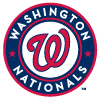 Howie Kendrick, 1B/2B/3B, Nationals: Injuries limited Kendrick just 131 games over the last two seasons, and he had no clear starting role heading into the season, so it's no surprise that he was essentially free during draft season. It wouldn't have been wrong to project capable performances from him if given the opportunity, as he's been an above-average hitter in seven of the last eight seasons, but not many would have seen his .324/.362/.581 line coming. His 139 wRC+ would be a career high, and he's on pace for 24.7 homers, well above his career high of 18. The 35-year-old's Statcast numbers support his performance, as he owns a .328 expected batting average and a .609 expected slugging percentage on the back of a 13.6 percent barrell rate (up from 4.8 percent last season) and a 51.7 percent hard-hit rate (up from 44.4 percent). He still hasn't earned a full starting job in Washington despite Brian Dozier's .223/.311/.386 slash line, but there's a good chance he gets playing time elsewhere after the deadline.
Howie Kendrick, 1B/2B/3B, Nationals: Injuries limited Kendrick just 131 games over the last two seasons, and he had no clear starting role heading into the season, so it's no surprise that he was essentially free during draft season. It wouldn't have been wrong to project capable performances from him if given the opportunity, as he's been an above-average hitter in seven of the last eight seasons, but not many would have seen his .324/.362/.581 line coming. His 139 wRC+ would be a career high, and he's on pace for 24.7 homers, well above his career high of 18. The 35-year-old's Statcast numbers support his performance, as he owns a .328 expected batting average and a .609 expected slugging percentage on the back of a 13.6 percent barrell rate (up from 4.8 percent last season) and a 51.7 percent hard-hit rate (up from 44.4 percent). He still hasn't earned a full starting job in Washington despite Brian Dozier's .223/.311/.386 slash line, but there's a good chance he gets playing time elsewhere after the deadline.
FALLERS
Top 100 Picks
| PLAYER | POS | TEAM | ADP | EARNED $ RANK | DIFF |
|---|---|---|---|---|---|
| Corey Kluber | SP | CLE | 25.0 | 741 | 716.0 |
| Travis Shaw | 2B/3B | MIL | 93.6 | 700 | 606.4 |
| Jameson Taillon | SP | PIT | 57.4 | 399 | 341.6 |
| Jesus Aguilar | 1B | MIL | 82.5 | 415 | 332.5 |
| Noah Syndergaard | SP | NYM | 38.4 | 356 | 317.6 |
| Jose Peraza | 2B/SS/OF | CIN | 96.2 | 400 | 303.8 |
| Daniel Murphy | 1B/2B | COL | 68.8 | 348 | 279.2 |
| Carlos Carrasco | SP | CLE | 35.6 | 314 | 278.4 |
| Joey Votto | 1B | CIN | 67.4 | 331 | 263.6 |
| Aaron Nola | SP | PHI | 24.7 | 273 | 248.3 |
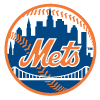 Noah Syndergaard, SP, Mets: Syndergaard's underlying stats don't support his poor 4.90 ERA, but even pitching to his peripherals wouldn't bring the results fantasy owners were looking for when they took Thor with a mid-third-round pick. There's nothing exactly wrong with Syndergaard's 3.63 FIP, 3.78 xFIP or 3.82 SIERA, but none of those marks is worthy of an ace. His 24.1 percent strikeout rate last year was supposed to be a blip, but he's recorded a worryingly similar 24.5 percent mark so far this season, not in line with what one might expect from a pitcher whose fastball averages 97.7 mph. His primary problem appears to be the loss of his formerly devastating slider. The pitch now sits at 88.4 mph after coming in at 92.0 mph last season, and he's dropped its usage from 20.9 percent to 12.8 percent.
Noah Syndergaard, SP, Mets: Syndergaard's underlying stats don't support his poor 4.90 ERA, but even pitching to his peripherals wouldn't bring the results fantasy owners were looking for when they took Thor with a mid-third-round pick. There's nothing exactly wrong with Syndergaard's 3.63 FIP, 3.78 xFIP or 3.82 SIERA, but none of those marks is worthy of an ace. His 24.1 percent strikeout rate last year was supposed to be a blip, but he's recorded a worryingly similar 24.5 percent mark so far this season, not in line with what one might expect from a pitcher whose fastball averages 97.7 mph. His primary problem appears to be the loss of his formerly devastating slider. The pitch now sits at 88.4 mph after coming in at 92.0 mph last season, and he's dropped its usage from 20.9 percent to 12.8 percent.
 Joey Votto, 1B, Reds: Votto's draft stock took something of a hit this offseason after he hit just 12 homers last year and saw his batting average fall nearly 36 points to a good but not great .284. He's fallen off a cliff this season, hitting just four homers while posting a .247/.342/.369 line. The 35-year-old has seen slight drops across the board in his barrel rate, exit velocity and hard-hit rate, leading to an expected batting average of just .230. In the most un-Votto-like development, he striking out at a 22.8 percent clip, a number twice as high as his 11.4 percent walk rate. Taken altogether, this looks like aging hitting the veteran harder than expected. There's perhaps a little hope for Votto owners, however, as he's hit .319 over his last 17 games, though he has just one homer over that stretch.
Joey Votto, 1B, Reds: Votto's draft stock took something of a hit this offseason after he hit just 12 homers last year and saw his batting average fall nearly 36 points to a good but not great .284. He's fallen off a cliff this season, hitting just four homers while posting a .247/.342/.369 line. The 35-year-old has seen slight drops across the board in his barrel rate, exit velocity and hard-hit rate, leading to an expected batting average of just .230. In the most un-Votto-like development, he striking out at a 22.8 percent clip, a number twice as high as his 11.4 percent walk rate. Taken altogether, this looks like aging hitting the veteran harder than expected. There's perhaps a little hope for Votto owners, however, as he's hit .319 over his last 17 games, though he has just one homer over that stretch.
Picks 101-450
| PLAYER | POS | TEAM | ADP | EARNED $ RANK | DIFF |
|---|---|---|---|---|---|
| Kyle Freeland | SP | COL | 167.4 | 958 | 790.6 |
| Nick Pivetta | SP | PHI | 146.9 | 852 | 705.2 |
| Zack Godley | SP/RP | ARI | 251.9 | 953 | 701.2 |
| Michael Wacha | SP | STL | 272.6 | 944 | 671.5 |
| Corbin Burnes | SP/RP | MIL | 295.2 | 965 | 669.9 |
| Francisco Mejia | C | SDP | 244.6 | 889 | 644.5 |
| Reynaldo Lopez | SP | CHW | 291.5 | 923 | 631.5 |
| A.J. Minter | RP | ATL | 311.6 | 908 | 596.4 |
| Daniel Palka | OF | CHW | 357.1 | 939 | 581.9 |
| Cedric Mullins | OF | BAL | 299.3 | 880 | 580.7 |
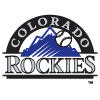 Kyle Freeland, SP, Rockies: Freeland was written up in this column in early May but deserves another mention after being sent to the minors on Friday. Last year's fourth-place finisher in the NL Cy Young race has pitched list a 64th-round fantasy pick this season. Freeland's 4.22 xFIP and 4.35 SIERA last season gave plenty of reason to fear significant regression from his 2.85 ERA, and fantasy owners were rightly hesitant. He's done far more than regress, slumping to an ugly 7.18 ERA. Freeland saw over-corrections from his strand rate (which dropped from 82.8 percent to 62.0 percent) and HR/FB rate (which spiked from 8.5 percent to 21.6 percent) but also saw his strikeout, walk and groundball rates all trend slightly in the wrong direction, leading to a 5.25 xFIP and a 5.10 SIERA. He'll likely return at some point this season, but there's little reason to believe he'll be able to significantly outperform his peripherals again, leaving him a very difficult arm to trust.
Kyle Freeland, SP, Rockies: Freeland was written up in this column in early May but deserves another mention after being sent to the minors on Friday. Last year's fourth-place finisher in the NL Cy Young race has pitched list a 64th-round fantasy pick this season. Freeland's 4.22 xFIP and 4.35 SIERA last season gave plenty of reason to fear significant regression from his 2.85 ERA, and fantasy owners were rightly hesitant. He's done far more than regress, slumping to an ugly 7.18 ERA. Freeland saw over-corrections from his strand rate (which dropped from 82.8 percent to 62.0 percent) and HR/FB rate (which spiked from 8.5 percent to 21.6 percent) but also saw his strikeout, walk and groundball rates all trend slightly in the wrong direction, leading to a 5.25 xFIP and a 5.10 SIERA. He'll likely return at some point this season, but there's little reason to believe he'll be able to significantly outperform his peripherals again, leaving him a very difficult arm to trust.
 Francisco Mejia, C, Padres: There was some optimism surrounding Mejia during draft season, with his impressive offensive profile in the minors leading him to be drafted in the 17th round. He failed to live up to those expectations early on, falling firmly into the backup role behind Austin Hedges and hitting a miserable .167/.207/.259. He was sent to the minors on June 1. Mejia is still just 23 years old, and catchers typically develop slowly, but his career slash line at the highest level now sits at .171/.231/.301 through 51 games. He could still return and perform at some point this season, but it would likely take an injury to Hedges to get him a regular role, and his big-league track record gives little reason to believe he'd thrive if given the chance.
Francisco Mejia, C, Padres: There was some optimism surrounding Mejia during draft season, with his impressive offensive profile in the minors leading him to be drafted in the 17th round. He failed to live up to those expectations early on, falling firmly into the backup role behind Austin Hedges and hitting a miserable .167/.207/.259. He was sent to the minors on June 1. Mejia is still just 23 years old, and catchers typically develop slowly, but his career slash line at the highest level now sits at .171/.231/.301 through 51 games. He could still return and perform at some point this season, but it would likely take an injury to Hedges to get him a regular role, and his big-league track record gives little reason to believe he'd thrive if given the chance.










